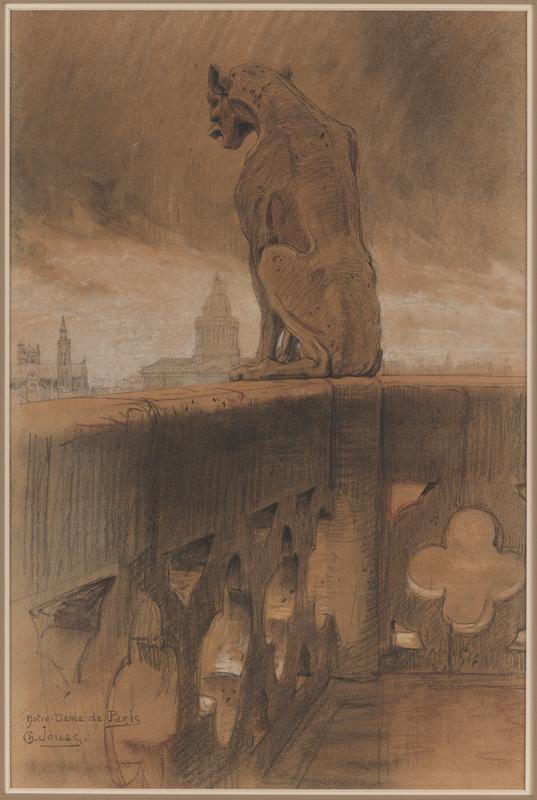

93–94. Charles Jouas, View of Saint Merry’s Church in Paris and Gargoyle of Notre-Dame of Paris
| Artist | Charles Jouas, French, Paris 1866–Paris 1942 |
| Title, Date | View of Saint Merry’s Church in Paris, 1913 |
| Medium | Black chalk and stumping, with white chalk highlights |
| Dimensions | 18 1/8 × 11 5/8 in. (46 × 29.5 cm) |
| Inscriptions + Marks | Lower left: St Merry / Chiens du transept nord / Ch. Jouas 1913 | Lower right: église Saint Merry / les chiens du transept nord / Ch. Jouas / 1918 |
| Provenance | [Galerie Paul Prouté S. A., Paris, until 2016; to Weisberg]; Yvonne and Gabriel Weisberg, Minneapolis |
| Exhibition History | "Reflections on Reality: Drawings and Paintings from the Weisberg Collection," Mia, 2022–23 |
| Credit Line | Promised gift of Gabriel P. and Yvonne M.L. Weisberg, Minneapolis |
| Artist | Charles Jouas, French, Paris 1866–Paris 1942 |
| Title, Date | Gargoyle of Notre-Dame of Paris, not dated |
| Medium | Black and white chalk with touches of colored chalk on beige paper |
| Dimensions | 18 1/2 × 12 3/16 in. (47 × 31 cm) |
| Inscriptions + Marks | Lower left: Notre-Dame de Paris / Ch. Jouas |
| Provenance | Sale, Piasa, Drouot, Paris, April 9, 1999, no. 194. [Galerie de Bayser, Paris, until 2015; to Weisberg]; Yvonne and Gabriel Weisberg, Minneapolis |
| Exhibition History | "Reflections on Reality: Drawings and Paintings from the Weisberg Collection," Mia, 2022–23 |
| Credit Line | Promised gift of Gabriel P. and Yvonne M.L. Weisberg, Minneapolis |
Charles Jouas loved Gothic sculpture, especially the gargoyles atop Notre-Dame cathedral and the nearby Church of Saint Merry (the name comes from Médéric, the seventh-century saint venerated in the neighborhoods of Paris’s Right Bank). Jouas drew the creatures from many different vantage points. Even when depicted from the back, the famous Notre-Dame gargoyle is a dominating figure, watching over the city of Paris, keeping evil at bay. By contrast, Jouas’s Saint Merry figures can appear slightly humorous or slightly melancholy: they look as though they have hunkered against an unending rainfall for hundreds of years.
Gargoyles such as these helped to inspire Victor Hugo’s novel The Hunchback of Notre-Dame, titled Notre-Dame de Paris when originally published, in 1831. The book focused public interest on the ongoing relevance of Europe’s Gothic heritage and the need to save deteriorating monuments, especially Notre-Dame cathedral. Jouas was part of a substantial audience in the late nineteenth and early twentieth centuries who continually propelled the publishing industry to reissue Hugo’s thriller, often in illustrated editions.
Jouas occasionally made paintings, but he was more of a draftsman and printmaker. His images of cityscapes, Gothic churches, and medieval ornament (cat. no. 92) won a broad following among collectors.
GPW